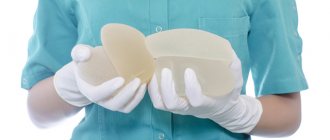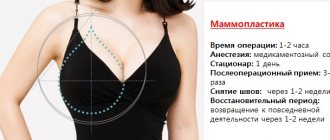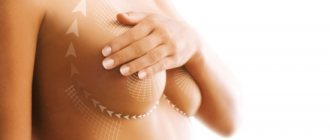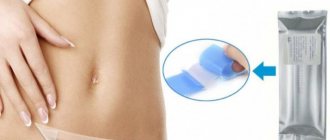If nature has not rewarded you with a magnificent bust, then plastic surgery can always help. Despite the popularity of mammoplasty, every girl asks many questions before it. The main one is how to choose implants for breast augmentation so that they look as natural as possible?
Plastic surgeon at the Vidnova clinic Svetlana Ratotenko talks about how to achieve a harmonious result with the help of silicone endoprostheses, what nuances are taken into account and whether it is possible to predict the outcome of the future bust.
What is a breast implant?
A breast endoprosthesis is a capsule with a filler placed under:
- gland;
- fascia;
- muscle.
And gives the bust a shape that is pleasing to the eye. Today, several types of them are known, differing in shape, size, filler composition and surface type. They have one thing in common - they are all placed inside the human body.
Selection of implant sizes
Bust measurements
To measure breasts, surgeons use different techniques and fairly simple instruments: surgical calipers and a plumb line.
One end of the plumb line is installed in the area of the jugular notch so that the free end passes in the middle of the navel. The first line (A) is drawn with a dotted line.
The second line is drawn parallel to the first, along the edge of the mammary gland (B). Line B runs perpendicular to line B along the upper edge of the breast. It usually corresponds to the third rib and can be felt. Auxiliary line D is perpendicular to B and runs along the outer edge of the gland, corresponding to the anterior anatomical axillary line. Line G runs along the fold of skin under the breast.
After this, the length of perpendicular segments passing through the nipple from line B to line D and from line B to line D is measured with a caliper.
3-D modeling of the mammary glands
3-D modeling will help you imagine what your breasts will look like with a particular breast implant.
To do this, a 3D simulator films the body in different projections, creating a three-dimensional image of your body. Then the size and shape of the breast with the implant is modeled, taking into account the volume of soft tissue (see photo). You can create several images with different types of implants, and then view them from all sides on a 3D model. After this, the final choice is made.
Comfort check
However, 3-D modeling does not answer the question of how comfortable you will be with breasts of the selected size. For this purpose, manufacturers have developed sizers - implant simulators. They are worn before surgery to select the appropriate model in terms of shape, profile and volume. It is recommended to wear under a tight sports bra that tightens the breasts well. Sizers cover the breasts, but are not underneath the breasts or the muscle and do not give a full view without a tightening.
Experienced surgeons recommend a simple way to check: buy a bra of the desired size, pour rice into a nylon stocking (300 ml for each “extra” size) and distribute the cereal evenly in the bra cup. You can walk around with such a bust for several days, play sports, do household chores, in general, do everything that you are used to in everyday life. This method will tell you how comfortable you will be with the new breast.
Types of endoprostheses by shape
Breast prostheses are divided according to their shape:
- for round ones;
- drop-shaped (anatomical);
- "anatomists" with a high profile.
The first ones add fullness to the bust, do not spoil the shape when unfolded and are relatively cheap. The latter imitate the shape of the mammary gland and are perfect for women whom nature has not endowed with elements of femininity. Teardrop-shaped options provide an impressive visual effect, but require the intervention of a surgeon when turning the prosthesis and are quite expensive.
Implant size and weight
The size of implants is determined by their volume. That is, in milliliters. One female breast size corresponds to 150/200 ml of implant volume. The most in demand is mammoplasty, which enlarges the breasts by 1-2 sizes. You can enlarge your breasts by 3 sizes. But such an operation is not indicated for everyone. For very thin girls, with a small chest volume and miniature mammary glands, such an increase is not recommended. When choosing the size of a prosthesis, you need to take into account not only its volume, but also its weight. Wondering how much more your breasts will weigh after surgery? Calculate the weight of the implant you want to place. So, to find out how much endoprostheses weigh, we use the formula:
30.0 cm3 = 28.35 grams,
This means that an insert with a volume of 300 cc. cm (approximately 300 ml) will weigh 283.5 grams. To reduce their weight, silica gel options were developed. They weigh almost 1/3 less than standard silicone ones. Modern endoprostheses can be:
- fixed size;
- adjustable.
The first ones have a certain and constant volume. The latter, unlike fixed ones, are equipped with a valve. And the surgeon has the opportunity to adjust the volume directly during the operation. There are artificial “inserts” of various sizes. They are usually made in 10 ml increments.
Bra and Bust Size
Can I choose by bra? Choosing a bra is a separate issue. Oddly enough, not all girls know how to choose the right underwear. Moreover, you should not focus on the volume of the cups during endoprosthetics. The number on the underwear label is not an end in itself. The main thing is that the bust sat beautifully.
Moreover, having received a new breast, you will change not only the volume of the cup, but also the volume of the bra strap. Are you surprised? But this is a fact. If you were a modest size 2 with a girth of 68 cm, after augmentation to size 3 you will need a bra with a strap of 72 cm with a C cup. This is the kind of underwear you will feel comfortable in. And the support will be as natural, correct and convenient as possible.
You can try to squeeze a new bust into your favorite 68 cm, but then you will have to buy a four-piece cup. And it will still be uncomfortable. This is the arithmetic for endoprosthetics.
The opposite situation also happens; after augmentation, the bra number remains the same. At the same time, the patient is satisfied with the shape and dimensions of her breasts, and her main complaint to the surgeon is the same number of underwear.
Breast prosthesis fillers
One of the issues that concerns girls/women who want to make their bust larger is the safety of the filler. The manufacturer claims that any filler has a high degree of safety. There are endoprostheses:
- saline (containing saline solution);
- silicone;
- with biocompatible hydrogel;
- silica gel beads;
- complex composition.
Saline solution and biocompatible fillers, when the capsule ruptures, are absorbed without harm to the body. Other fillers should not be absorbed. The most “ancient” and proven saline fillers. The least tested modern composite prostheses. Plastic surgeons prefer innovative materials. Patients choose an option based on financial capabilities. Complex prostheses can be:
- valve;
- valveless.
The valves can be adjusted in volume. Valveless ones have a fixed weight and size.
Implant structure
Silicone endoprostheses consist of a shell and a filler.
Filler
Typically, the implant is filled with high-viscosity silicone gel. It has good elasticity and holds its shape well. However, if it ruptures and leaks, it is dangerous, and gradually, when wearing an endoprosthesis, flows into its lower part, which reduces the aesthetic effect. The filler is not always silicone of varying degrees of cohesiveness (viscosity). There are implants filled with saline solution, with different projections and sizes.
Cohesive gel is also used. It is soft and provides a natural effect: the silicone implant looks like a real breast and at the same time has a “memory” effect, that is, it returns to its original shape when subjected to deformation.
Shell
Most products today have a textured shell that allows natural ingrowth of the surrounding soft tissue. This ensures good fixation of the endoprosthesis in place and reduces the likelihood of capsular contracture.
Surface of the endoprosthesis
The texture of the capsule can be smooth, spongy or rough. Smooth implants have faded into the background, as they take root less well, more often form contractures and become deformed. Textured endoprostheses have villi and/or roughness on the surface. This allows the connective tissue capsule, which is formed around the prosthesis, to press the villi and fuse with the prosthesis without deforming the latter. Sponge implants fuse well with connective tissue. For such prostheses there is a lower risk of displacement or rotation.
Want to know what smooth and textured implants look like? Take a look at the dew drop in the morning - this is the prototype of a transparent, drop-shaped prosthesis. Textured endoprostheses look like matte, smoothly ground lenses.
How long will new breasts last?
Will it be necessary to change implants over time? This question is asked by every woman who decides to undergo mammoplasty. The service life (shelf life) of modern endoprostheses is quite long. Manufacturers provide a lifetime guarantee for many types, but there are several situations that force women to undergo repeated surgery after 10-15 years. These include:
- damage to the capsule;
- change in the proportions of a woman’s body, and deterioration in the shape of the bust (due to changes in weight, pregnancy and lactation).
A less pleasant example is the story of Pip implants. New materials are still being studied, and the consequences of their use are becoming clearer over the years. Pips were filled with a technical version of silicone. And since their capsule could not provide complete tightness, the silicone leaked and harmed the woman’s health. Now the manufacturer is looking for clients with this type of implant and offering a replacement.
Factors influencing the choice of implant size
Only a plastic surgeon can objectively evaluate what shape and size is suitable for a woman. It takes into account many factors.
The structure of the body, including the chest, is an important factor that must be taken into account during mammoplasty in order to obtain an aesthetic result and minimize possible risks.
The volume of muscle tissue, subcutaneous fat, sagging (ptosis) of the mammary gland, height, and width of the chest are taken into account.
Width and curvature of the chest
Many women have a curvature of the chest. Often neither those around nor even its owner are aware of this. It is only noticeable on the sides. But the plastic surgeon takes such curvature into account.
If the chest has a round or barrel-shaped structure, the endoprostheses will “look” slightly to the sides. Because of this, the neckline will look less impressive than in patients with a flat chest. Usually all these points are discussed before the operation begins, so that there are no disappointments and unjustified expectations.
The choice of implant shape usually does not affect the outcome with such a structure, but the profile already matters. A high profile gives a more visible result. With the same input data, a medium profile is suitable for petite women.
With a narrow chest, regardless of shape, implants with a high profile will look better. It is this type of endoprosthesis that will deprive the breasts of the “washboard” effect after mammoplasty.
For patients with wide breasts, plastic surgeons offer low or medium profile implants with a wide base. In this case, unnatural sharpening can be avoided.
Natural breast size and height
The endoprosthesis complements your own mammary gland, and does not replace it. The same implant size will give different results in patients with initially different bust sizes.
Large breasts on a tall woman will look more harmonious than on a petite woman.
Breast shape
In mammoplasty, there are four breast shapes:
- disc - a small gland with a wide base and small height;
- conical - high chest with a small base and large height;
- hemispherical - the width and height are approximately equal;
- mastoid - the size of the gland is closer to conical, but slightly lowered and the nipple looks down.
For the same height and bra cup size, different endoprostheses are selected. It may be necessary to choose implants of different sizes if the bust of one remains firm, while the second has severe ptosis (sagging).
Sometimes a tubular form of the gland occurs. It refers to a congenital anomaly in which the lower pole and volume are practically absent, and the shape resembles a cylinder. The nipples with such breasts are flat, with wide areolas. The mammary gland is not evenly distributed throughout the entire volume, but is collected in a dense lump. Glandular tissue is located in the upper pole, sometimes in the area of the nipple-areolar zone.
This form does not pose a threat to the woman’s health and does not affect the quality of feeding the child, but it often becomes the cause of complexes and various psychological problems associated with intimate life. In this case, an anatomical implant of medium profile or higher is installed.
Skin elasticity and soft tissue volume
This indicator affects the size of the implant. Insufficient stretching prevents the installation of an endoprosthesis of the desired size.
Large implants will not be installed if the patient has aplasia of glandular tissue, a small volume of pectoral muscles and elastic skin. With such introductory procedures, the lower edge of the implant will be palpated, and the dermis will not stretch to the desired volume.
The amount of soft tissue in the breast area significantly influences the choice of endoprosthesis. For example, if you install a large implant under your own gland, it will be supported only by the skin, which will sag over time under the weight. Even a thin layer of pectoral muscle will not hold such an implant if an endoprosthesis is installed under it.










